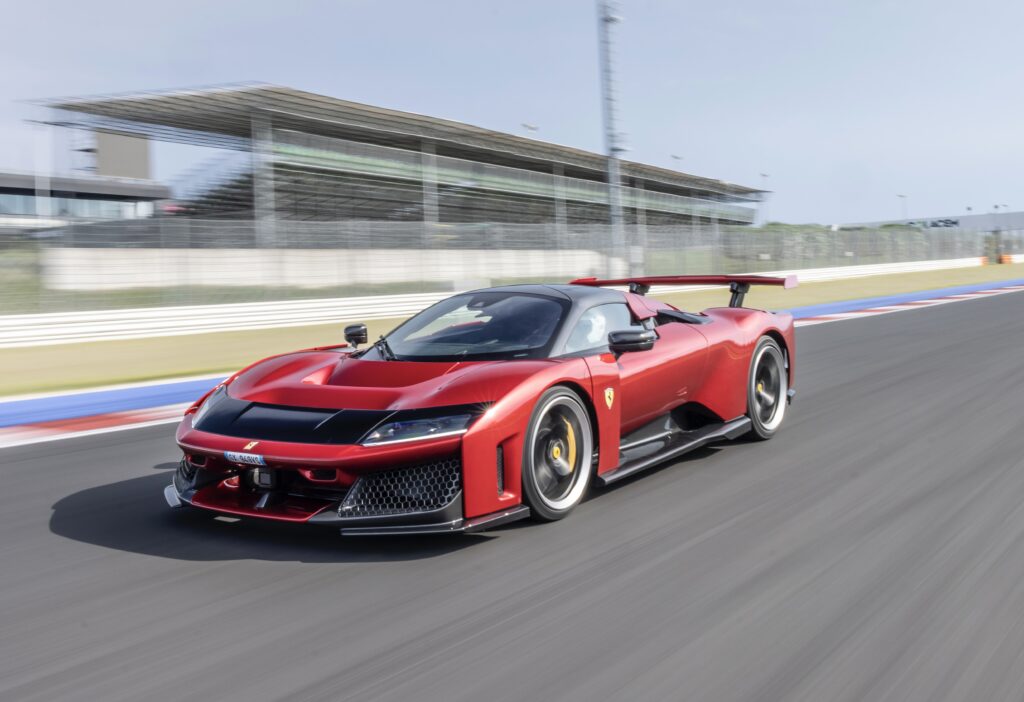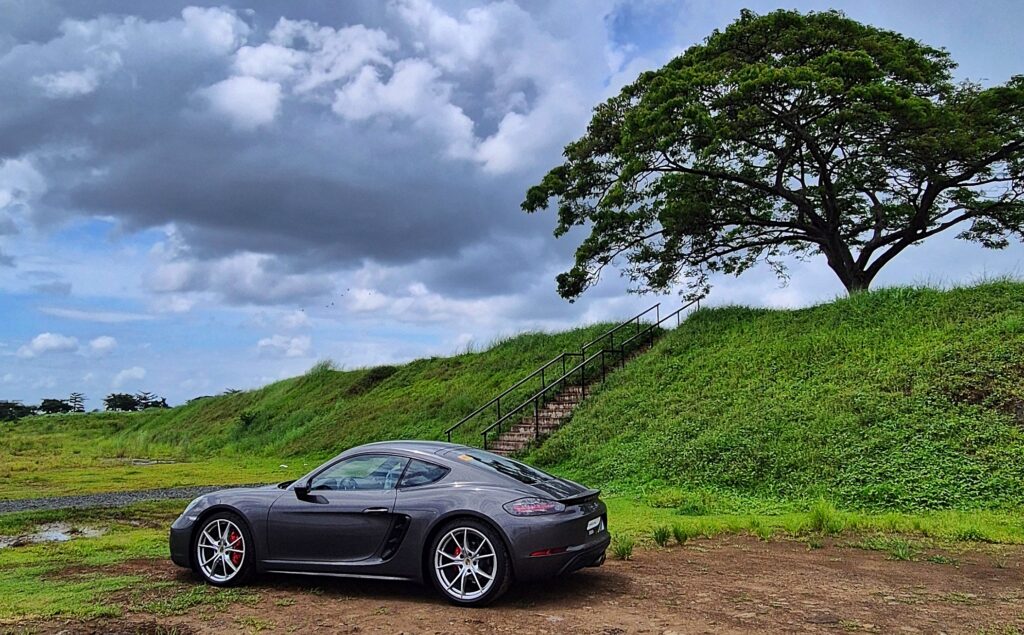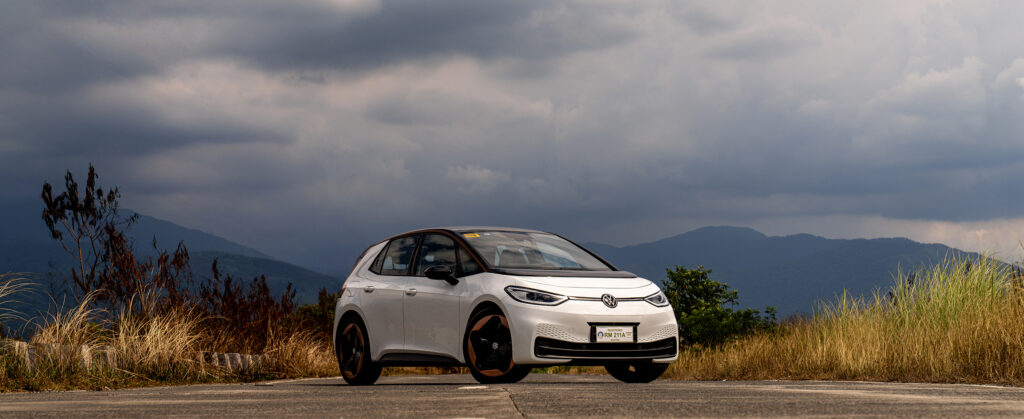Get over it already, the latest Ferrari F80 doesn’t have a V12. Or even a V8, for that matter! Instead, it is powered by a 800V hybridised twin-turbo V6.
Yes, a hybrid V6 just like the one in the 296 GTB, although the internals of the F80’s engine have naturally been extensively uprated. It sees the addition of dual front motors that work with the rear motor to further juice up the proceedings to the combined tune of 1200hp, and a 0-100km/h time of 2.15 seconds.
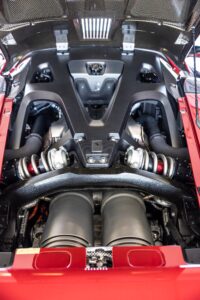
But why a V6? This goes back to the purpose of Ferrari’s “Supercar” series of special edition cars, which includes a stellar cast like the 288 GTO, F40, F50, Enzo and LaFerrari.
The road-legal track-fettled cars in this series are intended to provide a “snapshot” of the brand’s motorsports programme during the respective periods in time in which these cars were launched.
Such “Supercars” are design, technological and process showcases engineered to deliver the ultimate in performance, which also afford a glimpse of what we can expect to see in future models.
What does this mean? Well, one shouldn’t buy a performance-driven showcase model like the F80 and expect it to look backwards (for the emotional homage vibes, look towards the Icona series of special editions).
Apart from its F1 race-cars, Ferrari’s Le Mans-winning 499P race-cars are also powered by a twin-turbo V6. Mind you, Ferrari’s 2023 victory at the 24 Hours of Le Mans 24 was no easy feat, considering this was the Prancing Horse’s re-entry to the FIA World Endurance Championship after half a century.
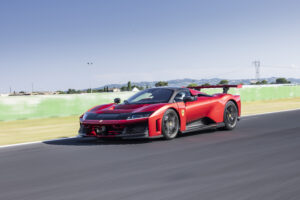
In fact, the brand would proceed to win Le Mans three consecutive years in a row (from 2023 to 2025), which all points to the fact that the engine at the heart of the F80 is in very good company indeed!
But just to clear the air so the rabble rousers should calm down, giving the F80 a V6 doesn’t mean Ferrari has given up on the charismatic V12. If that’s what you’re after, there are still the Purosangue, 12Cilindri and the emotionally-charged Icona range of SP models.
In the flesh, the F80 may not conform to the conventional image of beauty, but its presence hits like a veritable force of nature, with every design element functional to aid either aerodynamics or cooling.
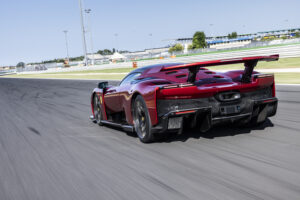
Its futuristic, wind-sculpted race-car design, with elements inspired by aerospace, marks a new design era for Ferrari. Even then, the F80 plays tribute to its past by incorporating aesthetic attributes of its progenitors, such as the seminal F40 and LaFerrari.
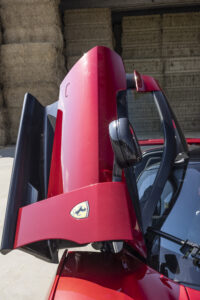
The gorgeous butterfly doors swing open to reveal a racy, driver-oriented cockpit that is designed around a single-seater concept (even though it is homologated for two occupants).
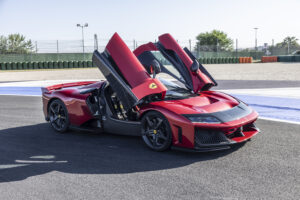
Thanks to the clever use of colors, materials and space, there’s a clear segregation between the driver’s seat (in red) and the set-back “1+” seat (in black), with the latter almost seeming to recede into the background when not in use.
Inspired from the world of motorsports, this was a strategic solution, because the narrower tub width that accommodates this “1+” (as opposed to a full 2) has allowed Ferrari to save weight and minimize drag.
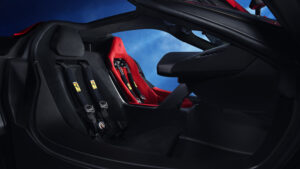
This author likes the new steering wheel, which we can expect to see in future Ferrari models. This compact item is satisfyingly chunky to hang on to, and features a flattened top and bottom for better legibility of the digital instruments.
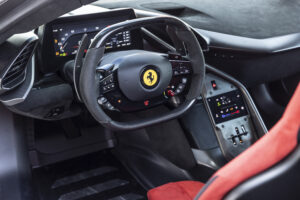
More importantly, Ferrari has brought back some physical buttons on the steering wheel to replace the haptic-touch ones. However, we should add that the F80 still features the haptic touch start/stop, not the familiar physical starter button that has returned with the recently launched Amalfi.
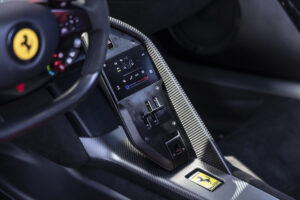
Petrolheads like us have grown to appreciate the use of electric motors to boost performance. Unlike the SF90, there’s no electric-only drive mode on the F80 (because why would you!), with the front and rear motors working to create an all-wheel drive powertrain, which is all the better to cope with the F80’s epic levels of performance.
Century sprint, top speed and maximum output figures are good fodder with which to impress the boors at the bar, but driving enthusiasts look towards how all the ingredients work together to create a visceral driving experience.
Our journey towards motoring nirvana in the F80 is supported by an intelligent suite of active suspension and active aerodynamics features, which works with the engine’s hyper-elastic powerband to create a potent performance machine.
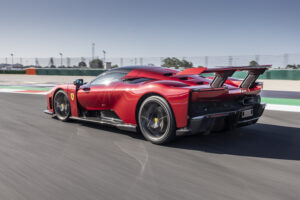
In spite of its complex systems, the F80 is seamless to drive fast, organic even, without any hint that there is any electronic intervention behind your go-faster shenanigans.
It isn’t just the straight-line acceleration that takes one’s breath away, because the speeds you can carry into the corners (if you dare!) challenge the laws of physics, with the full hit of torque never more than a flex of the right foot away.
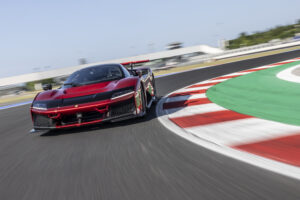
By adopting e-turbo technology (the first time in a Ferrari), there’s now no turbo lag to speak of in the F80. The ICE works in tandem with the electric motors to create a whirlwind force of destruction that cuts a tightly controlled swathe through the apices of the circuit.
The amazing thing is how neutral and flat the F80 can be coaxed and cajoled around the track, especially with the sticky Michelin Pilot Cup Sport 2 R tyres, ground effects gluing the car to the tarmac and the rear wing rising in maximum downforce mode all working in tandem.
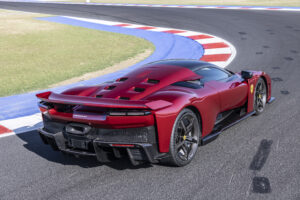
Yet, it never feels like you’re in a racing sim, because there’s ample feel through steering and seat-of-pants to ensure you’re always plugged into the action. The F80 is a get-in-and-drive sort of car, but it also constantly keeps you on your toes, because of the intense and frenetic pace of action it encourages.
The F80 will stop as well as it goes too, because Ferrari’s carbon-ceramic brakes are among the best in the business, with not just the immense stopping power, but also an organic pedal feel that allows for precise modulation.
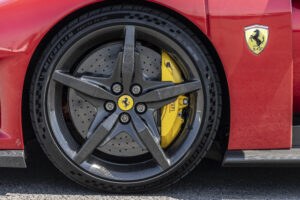
In some ways, it caters to a variety of drivers, in that it doesn’t just flatter a narrow band of skilled drivers. However, you’ll quickly realise that the more you try to take, the more the F80 has to offer and the only limits are your skill level and nerves!
A large part of every supercar’s appeal is an operatic soundtrack, but this is somewhat muted on the F80 no thanks to the regulatory bodies that have been working hard to reduce drive-by sound.
Fortunately, the F80 makes all the right noises when you’re ensconced within the cabin, with an enthralling mechanical symphony of whooshes, long sighs, deep breaths and the bang-bang-bang of the gearshifts performing in concert with the distinct electronica that comes with the electric hardware.
On the road, the sight of the low-slung, bewinged machine on the prowl is something to behold. As you transition from winding roads to the highway, the F80 switches effortlessly from maximum attack to maximum cruise mode, with the chassis delivering a firmly-damped but pliant ride as you’re driving home from the circuit.
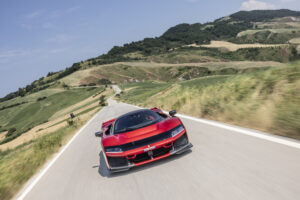
It would do well to remember that like its illustrious forebears in the “Supercar” range, the F80 is the ultimate expression of motorsports trickle-down at this current point in time.
This means that it’s a zero-sum game to ponder if it is better than the LaFerrari, the Enzo, the F50 or any of the earlier cars (many collectors keep them all), because quite simply put, it is possibly the fastest and most furious road-going Ferrari you can buy today.
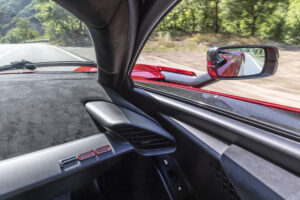
Ferrari F80
Engine: 2992cc, twin-turbo V6, electric motors, 800V
Engine Power at rpm: 900hp at 8750rpm
Engine Torque at rpm: 850Nm at 5500rpm
Electric Motor (front): 105kW (each of the two electric motors); 121Nm (peak torque)
Electric Motor (rear): 70kW (regen. braking:); 60kW (ICE assist); 45Nm (peak torque)
Combined Power: 1200hp
Gearbox: 8spd F1 DCT dual-clutch
0-100km/h: 2.15secs
Top Speed: 350km/h
Fuel Consumption: 13.5l/100km
CO2: 307g/km

